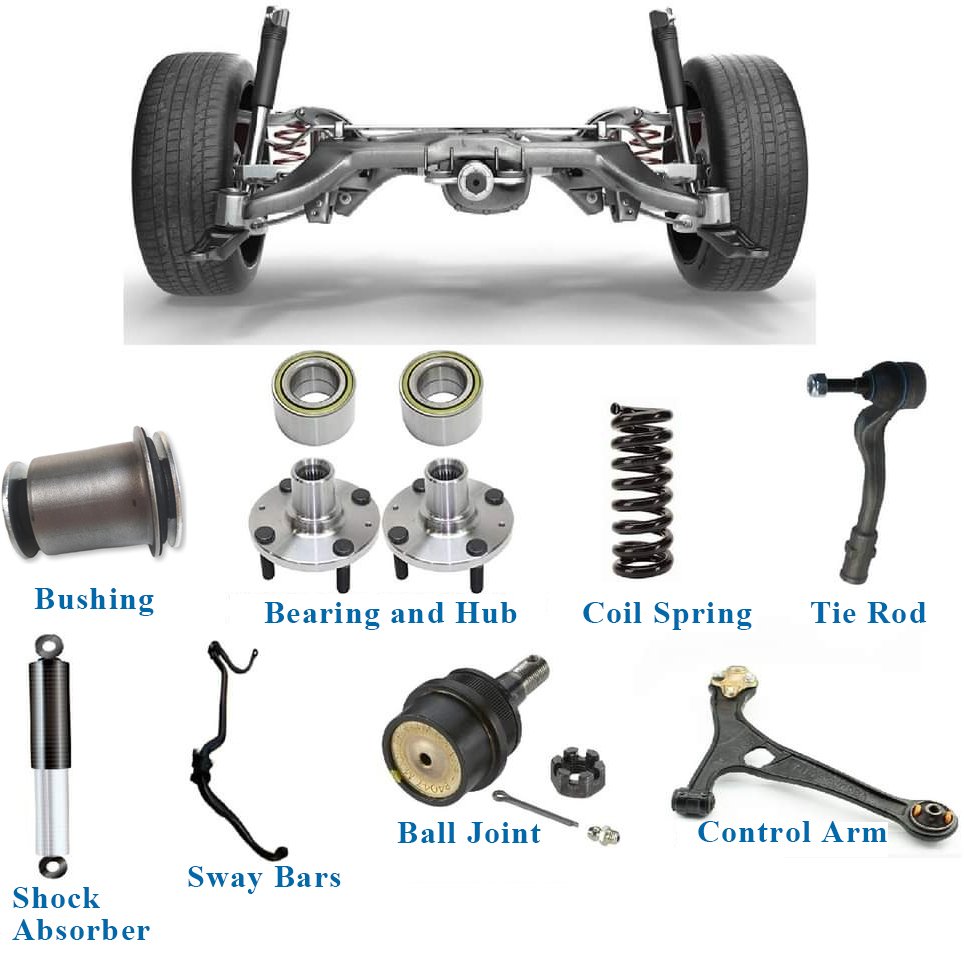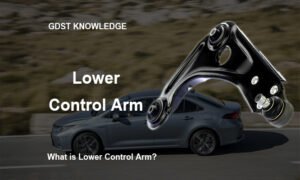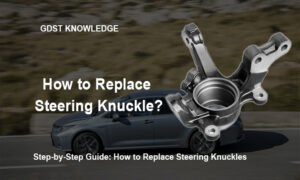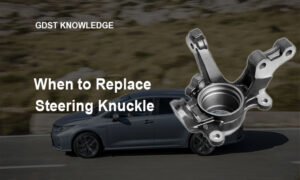What are common steering systems?
The steering system of a vehicle is responsible for allowing the driver to control the direction of the vehicle’s movement. It allows the driver to turn the wheels and maneuver the vehicle in the desired direction. The steering system works in conjunction with the suspension system to provide a smooth and controlled driving experience.

The basic components of a typical steering system include:
- Steering wheel: it is the control interface used by the driver to input steering commands and control the direction of the vehicle.
- Steering Column: it is the shaft that connects the steering wheel to the steering gearbox or rack and pinion. It may also contain other components such as the ignition switch, turn signal switch, and other controls.
- Steering Gearbox or Rack-and-Pinion: is responsible for converting the rotational input from the steering wheel into lateral motion to turn the front wheels. It can be either a traditional steering gearbox or a more modern rack-and-pinion system, depending on the vehicle’s design.
- Tie Rods: are connecting rods that transmit the steering input from the gearbox or rack-and-pinion to the steering knuckles, which are attached to the front wheels.
- Steering Knuckles: they are components that connect the tie rods to the front wheels and allow them to pivot and turn.
- Power Steering Pump (if equipped): In some vehicles, a power steering pump is used to assist the driver in turning the wheels. It is typically driven by a belt from the engine and provides hydraulic power to the steering system to reduce the effort required by the driver.
- Hoses, Belts, and Fluid (if equipped): Some steering systems may also include hoses, belts, and fluid for power steering systems, which are responsible for circulating hydraulic fluid to assist with steering.
- Steering Shaft, U-joints, and Couplings: are components that transmit the rotational input from the steering wheel to the steering gearbox or rack-and-pinion.
Through the steering system, the driver controls the direction of movement of the vehicle, which is essential for safe and controlled driving. Regular maintenance, inspection and timely replacement of worn or damaged components are important to ensure the proper functioning of the steering system and the safe operation of the vehicle.
What are the basic suspension systems?
The suspension system of a vehicle is responsible for providing a smooth and controlled ride by absorbing and dampening the impacts from the road surface. It helps to maintain contact between the tires and the road, provides stability during cornering, and isolates the vehicle and passengers from excessive vibrations and shocks. The suspension system plays a critical role in ensuring safe and comfortable driving.

The suspension system typically consists of the following components:
- Shock Absorbers or Struts: are responsible for dampening the motion of the suspension system. They absorb and dissipate the energy from the road surface impacts, helping to maintain contact between the tires and the road and providing a smooth ride.
- Springs: are responsible for supporting the vehicle’s weight and maintaining ride height. They absorb and store the energy from road impacts and help to provide a comfortable ride.
- Control Arms: they are critical components that connect the suspension system to the vehicle’s chassis. They allow the suspension system to move up and down while maintaining the proper geometry for wheel alignment and handling.
- Sway Bars: also known as stabilizer bars, are designed to reduce body roll during cornering. They connect the suspension system of the left and right wheels, helping to maintain stability and control during turns.
- Bushings: are used in various suspension components to provide cushioning and reduce friction between moving parts. They help to absorb vibrations and impacts, and also provide flexibility and allow for smooth suspension movement.
- Ball Joints: are pivot points that connect the control arms to the steering knuckles. They allow for the articulation of the suspension system during steering and provide flexibility for smooth suspension movement.
- Strut Mounts (if equipped): they are used in strut-based suspension systems and provide a connection between the strut assembly and the vehicle’s chassis. They help to absorb vibrations and impacts and also allow for smooth steering and suspension movement.
- Wheel Bearings: are responsible for supporting the weight of the vehicle and allowing the wheels to rotate smoothly. They are critical for maintaining proper wheel alignment and preventing excessive tire wear.
The suspension system is designed to work in harmony with the steering system to provide a comfortable and controlled driving experience. Regular maintenance, inspections, and timely replacement of worn or damaged components are important to ensure the proper functioning of the suspension system and the safe operation of the vehicle.
How do you check steering and suspension components?

It is an important part of routine vehicle maintenance to check the steering and suspension components of a car. Here are some steps you can follow to check the steering and suspension components:
- Visual Inspection: Start by visually inspecting the steering and suspension components for any signs of damage, wear, or looseness. Look for cracks, bends, rust, or any other visible abnormalities in components such as the steering gearbox or rack-and-pinion, tie rods, control arms, ball joints, sway bars, springs, and shock absorbers or struts.
- Check for Play or Play in Steering: With the engine, off, grasp the steering wheel and gently rock it back and forth while observing the movement of the front wheels. If you feel excessive play or free movement in the steering wheel or notice that the front wheels move without corresponding movement of the steering wheel, it could indicate worn or loose steering components such as tie rods, ball joints, or the steering gearbox or rack-and-pinion.
- Check for Uneven Tire Wear: Inspect the tires for uneven wear patterns, such as excessive wear on the inner or outer edges, which could indicate misalignment or worn suspension components.
- Listen for Noises: While driving, listen for any unusual noises coming from the steering or suspension system, such as clunking, knocking, or squeaking sounds, which may indicate worn or damaged components.
- Perform a Bounce Test: To check the condition of the shock absorbers or struts, press down firmly on each corner of the vehicle and release. The vehicle should bounce back up and settle within a few bounces. If it continues to bounce excessively or does not settle properly, it may indicate worn or damaged shock absorbers or struts.
- Follow Manufacturer’s Maintenance Schedule: Lastly, it is important to follow the manufacturer’s recommended maintenance schedule for your specific vehicle, which may include periodic inspections or replacements of steering and suspension components. Regular maintenance can help identify and address any issues early on, preventing further damage and ensuring the safe and smooth operation of the vehicle.
The above steps are general guidelines and may vary depending on the make, model, and design of the vehicle. Always refer to the vehicle’s owner’s manual and follow proper safety procedures when inspecting any components of a vehicle. If you are not familiar with vehicle maintenance or lack the necessary tools or experience, it is best to seek professional assistance from a qualified mechanic.
How do I know if my suspension needs replacing?

Here are some common indicators that your suspension components may be worn or damaged and require replacement:
- Rough or Bumpy Ride: If you notice that your vehicle’s ride quality has become harsher, with increased vibrations, bumps, or jolts felt in the cabin, it could indicate worn or damaged shock absorbers or struts. These components are responsible for damping the motion of the suspension and maintaining a smooth ride, so if they are not functioning properly, it can result in a rough or uncomfortable ride.
- Excessive Body Roll or Poor Handling: If your vehicle exhibits excessive body roll or leans excessively during cornering, or if you notice a decrease in overall handling performance, it may indicate worn or damaged sway bars or control arms. Sway bars help control body roll during cornering, and control arms are critical components that connect the suspension to the vehicle’s chassis. If these components are worn or damaged, it can affect the stability and handling of the vehicle.
- Uneven Tire Wear: If you notice uneven wear patterns on your tires, such as excessive wear on the inner or outer edges, it could indicate misalignment or worn suspension components. Suspension issues can affect the alignment of the wheels, leading to uneven tire wear.
- Knocking or Clunking Noises: If you hear knocking, clunking, or other unusual noises coming from the suspension area while driving over bumps or rough roads, it could indicate worn or damaged components such as ball joints, control arms, or bushings. These components may need replacement if they are worn or damaged.
- Steering Issues: If you experience steering problems such as increased play or looseness in the steering wheel, or if the vehicle does not respond promptly or accurately to steering inputs, it may indicate worn or loose steering components such as tie rods or the steering gearbox or rack-and-pinion.
- Fluid Leaks: If you notice fluid leaks around your shock absorbers or struts, it may indicate that they are leaking and not functioning properly. Damaged or leaking shock absorbers or struts may need replacement.
- Age and Mileage: Suspension components, like all parts of a vehicle, have a finite lifespan and can wear out over time. If your vehicle has high mileage or is several years old, it may be due for suspension replacement, even if you haven’t noticed any specific symptoms of wear or damage.
It’s important to note that these signs may also indicate other issues with your vehicle, and a proper inspection by a qualified mechanic is recommended to accurately diagnose the condition of your suspension system.
For more information on steering and suspension system parts check out GDST auto parts.






